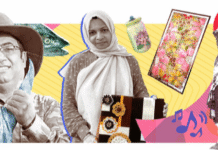About 7.5 lakh births could be minimised in the country each year by only eliminating child marriage, says a population expert.
“In Bangladesh, about 17 percent of girls get married before reaching 15 while most of them give birth to two children before reaching 18 years,” said country director of Population Council Dr Ubaidur Rob on Wednesday.
Dr Ubaidur came up with the view in his power-point marking the launching of State of World Population Report 2013. UNFPA Bangladesh organised the launching ceremony at Sonargaon Hotel in the capital.
This year the report focuses an important and emerging global concern – ‘Motherhood in Childhood: Facing the challenges of adolescent pregnancy’.
Secretary of the Health and Family Welfare Ministry MM Neaz Uddin and officer-in-charge of UNFPA Bangladesh Pornchai Suchitta, among others, spoke on the occasion.
Dr Ubaidur said about 58 percent of adolescents by age of 19 begin childbearing while 51 percent have given birth, 7 percent get pregnant with first child and 8 percent have two children.
He said about 194 pregnant mother die while giving birth in every one lakh pregnant mother in the country. And most of them are adolescent mothers.
Today, there are about 580 million adolescent girls in the world. Four out of five of them live in developing countries. Bangladesh ranks third in the adolescent pregnancy in the world — highest in the Asia.
Dr Ubaidur said child marriage is highly prevalent in Khulna, Rangpur and Rajshahi regions due to social insecurity while Sylhet region is comparatively is in a better position as girls in the region get married at the age of 18.
He suggested investing in adolescent girls’ education and creating mass awareness about the worst consequence of early marriage to check child marriage in the country.
Pornchai Suchitta said adolescents comprise about half of the youth population of Bangladesh. “Adolescence is a critical time for many people and the skilled acquired during this period can set up the foundation of the rest of their lives. Unfortunately, it’s also a time when many young people are extremely vulnerable to risks due to their position in between childhood and adulthood,” he said.
He said while Bangladesh has made great stride in addressing many issues like malnourishment and child lobur, adolescent sexual and reproductive health and rights must be given more attention.
Neaz Uddin stressed the need for educating people in society so that they can be aware of the consequences of child marriage and raise their voice to stop it.
Motherhood in childhood is a huge global problem, especially in developing countries, where every year 7.3 million girls under 18 give birth, says the State of World Population 2013 released by UNFPA, the United Nations Population Fund today.
Of these 7.3 million births, 2 million are to girls 14 or younger, who suffer the gravest long-term health and social consequences from pregnancy, including high rates of maternal death and obstetric fistula.
The report places particular emphasis on girls 14 and younger who are at double risk of maternal death and obstetric fistula.
Motherhood in childhood offers a new perspective on adolescent pregnancy, looking not only at the girls’ behaviour as a cause of early pregnancy, but also at the actions of their families, communities and governments.
According to the report, early pregnancy takes a toll on a girl’s health, education and rights. It also prevents her from realising her potential and adversely impacts the baby.
Source: UNBconnect










